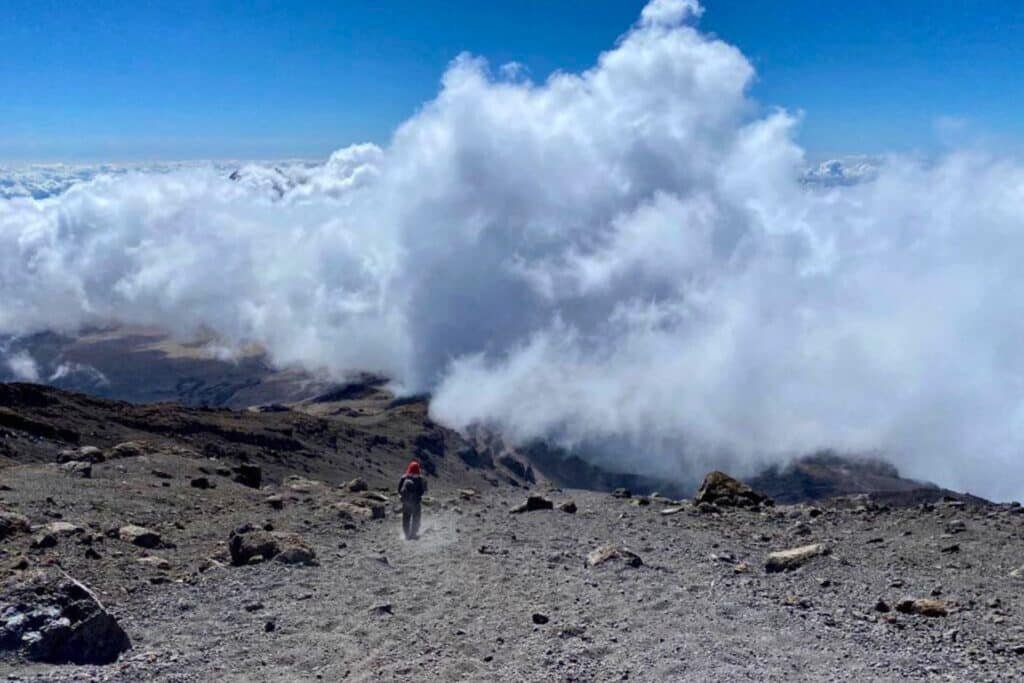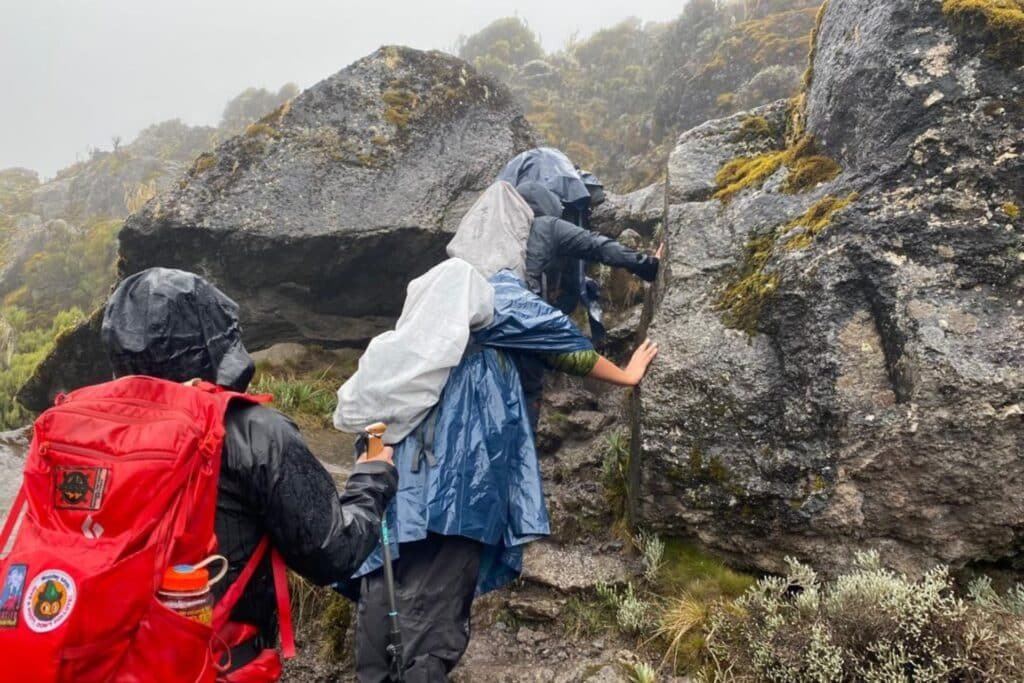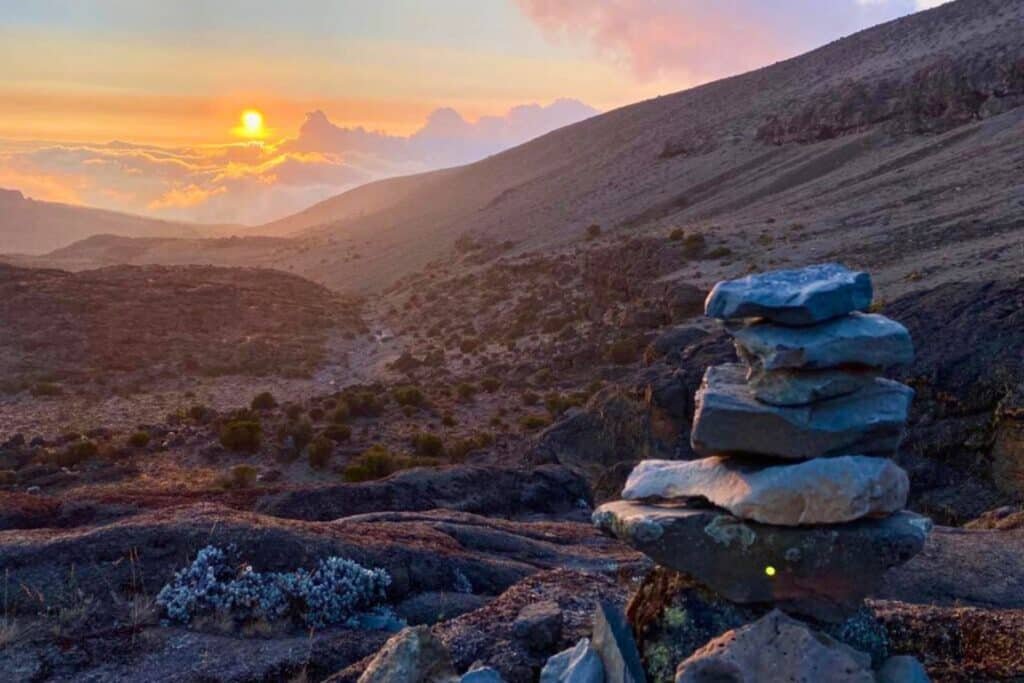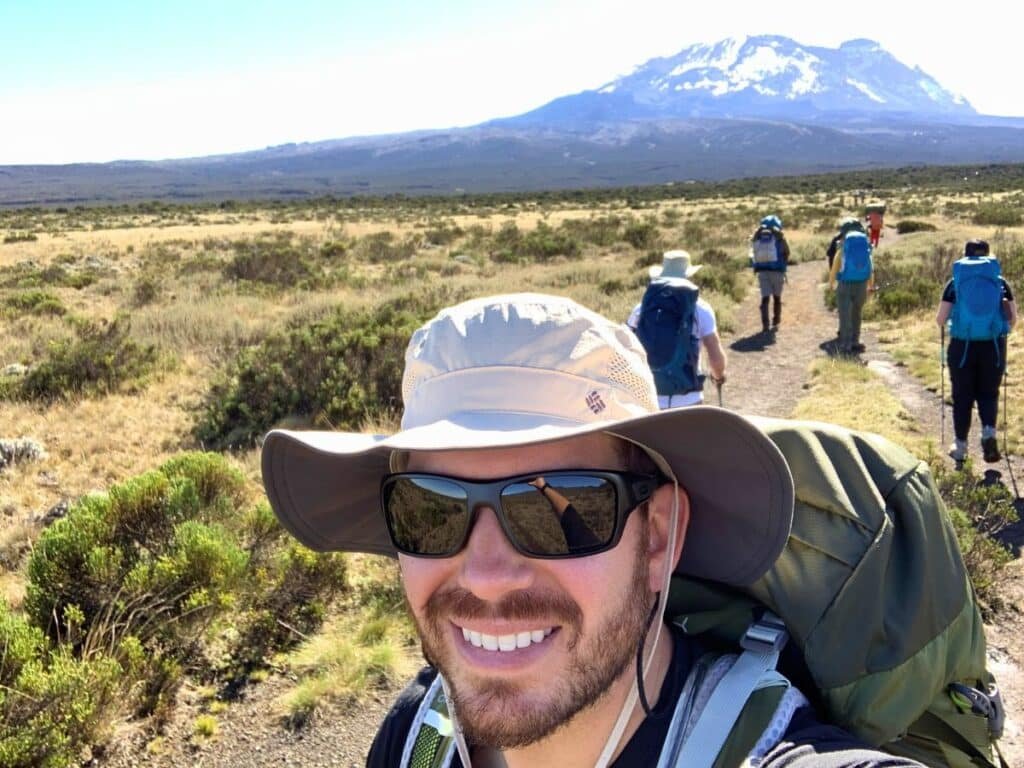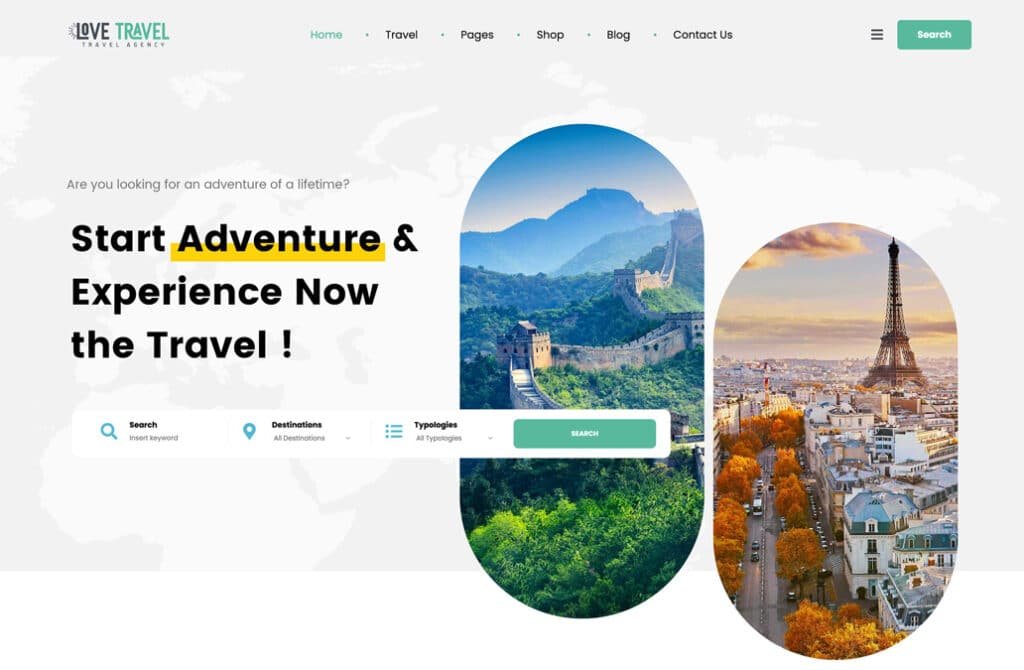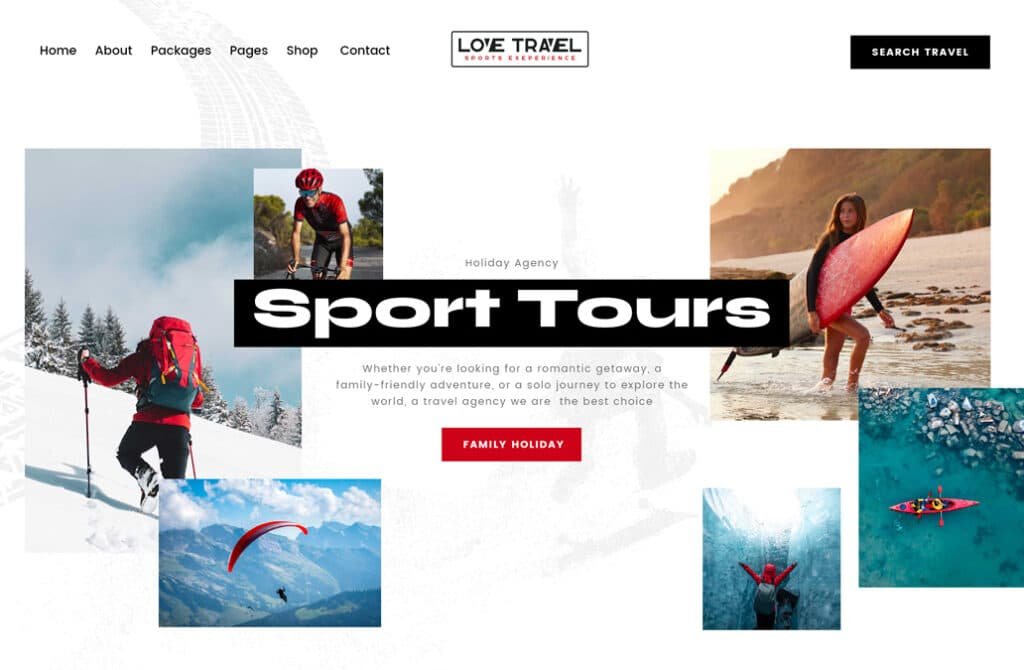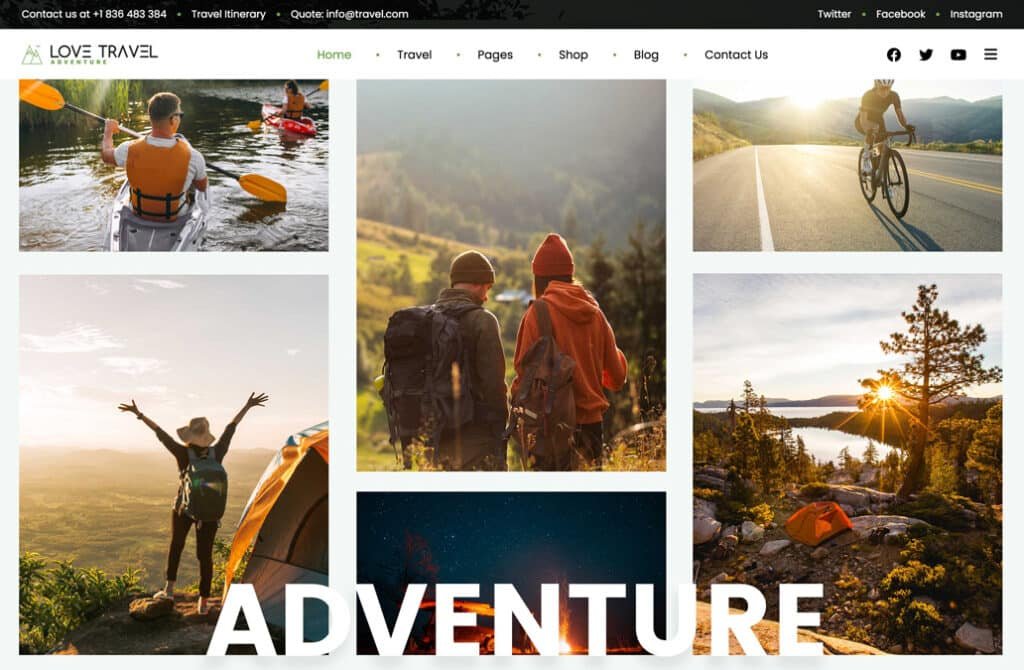Altitude sickness, or Acute Mountain Sickness (AMS), is a common challenge for climbers attempting to summit Mount Kilimanjaro. With over 75% of trekkers experiencing mild symptoms above 10,000 feet, understanding how altitude affects the body is crucial for a safe and successful climb.
At 19,341 feet (5,895 meters), Kilimanjaro’s rapid ascent presents unique risks, making proper acclimatization and symptom awareness essential.
What Causes Altitude Sickness on Kilimanjaro?
Altitude sickness primarily occurs due to lower oxygen levels at high altitudes. As you climb, air pressure decreases, meaning fewer oxygen molecules per breath.
▪️ At 12,000 feet (3,600 m), there are about 40% fewer oxygen molecules than at sea level—forcing your body to work harder to absorb oxygen.
▪️ Your body compensates by increasing your breathing rate, heart rate, and red blood cell production.
▪️ These adaptations take 1-3 days, but Kilimanjaro’s fast ascent often outpaces the body’s ability to adjust—leading to AMS symptoms within 12-24 hours of reaching a new altitude.
Physical fitness does not prevent altitude sickness. Even experienced climbers can develop AMS if they ascend too quickly.
Types of Altitude Sickness on Kilimanjaro
There are three main forms of altitude sickness, ranging from mild to life-threatening:
▪️ Acute Mountain Sickness (AMS) – The most common form, causing headaches, dizziness, fatigue, nausea, and sleep disturbances.
▪️ High Altitude Pulmonary Edema (HAPE) – A dangerous condition where fluid builds up in the lungs, leading to shortness of breath, blue lips, and extreme fatigue.
▪️ High Altitude Cerebral Edema (HACE) – The most severe form, where fluid swells the brain, causing confusion, loss of coordination, and even unconsciousness.
AMS can escalate into HAPE or HACE if ignored—early symptom recognition is critical.
Causes of Altitude Sickness on Kilimanjaro
Altitude sickness on Mount Kilimanjaro occurs due to several factors that limit the body’s ability to acclimatize:
✔️ Rapid Ascent – Climbing too quickly without allowing time to adjust is the #1 cause of AMS.
✔️ Extreme Altitude – Kilimanjaro’s summit falls into the “extreme altitude” category, where the body struggles to function efficiently.
✔️ Overexertion at High Altitude – Pushing too hard on the climb can worsen symptoms and increase AMS risk.
✔️ Dehydration – Not drinking enough water can make altitude symptoms more severe.
✔️ Individual Susceptibility – Some climbers are more prone to altitude sickness, regardless of fitness level or past experience.
A history of altitude sickness increases your risk—if you’ve had AMS before, take extra precautions.
🔍 Kili Facts to Impress Your Friends
Over 50,000 people attempt to climb Kilimanjaro every year, but only about 65% successfully reach the summit due to altitude sickness.
Recognizing & Preventing Altitude Sickness on Kilimanjaro
Altitude sickness is a real concern for Kilimanjaro climbers, and understanding the symptoms and prevention strategies is essential for a safe and successful summit. Symptoms can range from mild discomfort to severe, life-threatening conditions, so awareness and early intervention are critical.
⚠️ Common Symptoms of Altitude Sickness on Kilimanjaro
Altitude sickness typically begins within 12-24 hours of reaching a higher elevation and can worsen at night. Symptoms vary but often start as mild discomfort and progress if not managed properly.
Mild to Moderate Symptoms (Most Common)
✔️ Headache – Often throbbing or persistent.
✔️ Dizziness & Lightheadedness – Affects balance and coordination.
✔️ Nausea & Vomiting – Can lead to dehydration.
✔️ Fatigue & Weakness – Feeling sluggish or lacking energy.
✔️ Shortness of Breath – Especially noticeable during exertion.
✔️ Loss of Appetite – Reduced desire to eat, which can lead to energy depletion.
✔️ Disturbed Sleep Patterns – Difficulty falling or staying asleep.
✔️ Increased Heart Rate – A natural response to low oxygen levels.
If symptoms appear mild and manageable, they often improve with hydration, rest, and gradual acclimatization.
Severe Symptoms: Recognizing HAPE & HACE
If mild symptoms escalate, climbers may develop life-threatening altitude-related illnesses:
▪️ High Altitude Pulmonary Edema (HAPE): Fluid buildup in the lungs.
▪️ High Altitude Cerebral Edema (HACE): Brain swelling due to low oxygen levels.
Warning Signs of HAPE & HACE:
🔸Persistent dry cough – May indicate fluid buildup in the lungs.
🔸Shortness of breath at rest – Struggling to breathe, even when not moving.
🔸Confusion or Irrational Behavior – A major red flag of HACE.
🔸Loss of Coordination (Ataxia) – Difficulty walking in a straight line.
🔸Bluish Lips or Fingernails – A sign of dangerously low oxygen levels.
If severe symptoms appear, immediate descent is the only solution—never ignore worsening altitude sickness.
Acclimatization Strategies: How to Reduce Altitude Sickness on Kilimanjaro
To increase your chances of reaching the summit safely, proper acclimatization is crucial. The slower you ascend, the better your body adapts.
Best Acclimatization Practices for Climbers
✔️ Choose a Longer Route (7+ Days) – Routes like Lemosho & Northern Circuit allow better acclimatization.
✔️ Hike Slowly (“Pole Pole”) – Climbing too fast increases the risk of AMS—conserve energy and pace yourself.
✔️ Follow the “Climb High, Sleep Low” Principle – Take short acclimatization hikes above camp and sleep at a lower altitude.
✔️ Drink 3-4 Liters of Water Daily – Dehydration worsens altitude sickness. Staying hydrated helps your body adapt.
✔️ Avoid Overexertion – Rest frequently, especially in the early stages of the climb.
Your guide will be actively monitoring you wellness. Ensure to communicate any discomfort immediately.
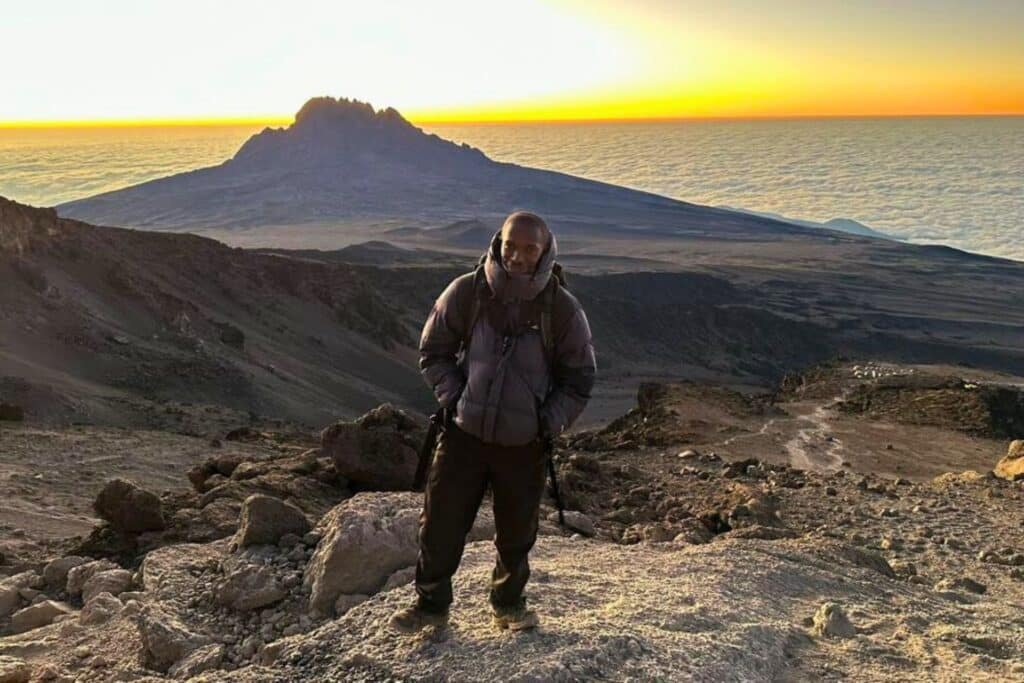

Altitude Sickness Treatments on Kilimanjaro: How to Stay Safe at High Elevations
If you experience altitude sickness on Kilimanjaro, knowing how to respond quickly and effectively can mean the difference between reaching the summit safely or having to turn back. The best treatment is prevention, but if symptoms develop, proper management is essential to avoid severe complications.
Treating Altitude Sickness: What Works Best?
✔️ Descending is the #1 Treatment – If symptoms worsen, the fastest way to recover is to descend 1,000 to 3,300 feet (300 to 1,000 meters) immediately.
✔️ Resting for 24-48 Hours – If symptoms are mild, staying at your current altitude and allowing time for acclimatization can help.
✔️ Medications Can Help Manage Symptoms – While not a cure, certain medications support acclimatization and relieve discomfort.
Never ignore persistent or worsening symptoms—delaying treatment can lead to life-threatening conditions like HAPE or HACE.
Medications for Altitude Sickness on Kilimanjaro
Several medications can help manage symptoms and improve acclimatization:
✔️ Acetazolamide (Diamox) – 125 mg twice daily
- Speeds up acclimatization by increasing breathing rate and oxygen absorption.
- Most widely used and effective medication for altitude sickness prevention.
✔️ Dexamethasone – Emergency Use for Severe Cases
- Reduces brain swelling caused by altitude but does NOT improve acclimatization.
- Used for High Altitude Cerebral Edema (HACE)—requires immediate descent.
✔️ Ibuprofen – 600 mg every 8 hours
- Helps relieve altitude-related headaches and inflammation.
- Can be used alone or combined with Diamox for better relief.
✔️ Nifedipine – Used for High Altitude Pulmonary Edema (HAPE)
- Reduces fluid buildup in the lungs but is not a substitute for descent.
- Only recommended under medical supervision.
Always consult a healthcare provider before using altitude medications.
Acetazolamide (Diamox)
Acetazolamide (Diamox) is the most effective medication for preventing altitude sickness on Kilimanjaro. It works by increasing breathing rate, which helps your body absorb more oxygen at high elevations.
▪️Recommended Dosage: 125 mg twice daily, starting 24 hours before ascent and continuing for 2-3 days at high altitude.
▪️Supports acclimatization but is NOT a substitute for a gradual ascent.
▪️Common Side Effects: Increased urination, tingling in hands/feet, and occasional nausea.
▪️NOT recommended for: Individuals with sulfa allergies or severe kidney/liver disease.
Some trekkers use Ibuprofen (600 mg every 8 hours) as an alternative, though Diamox is more effective for acclimatization.
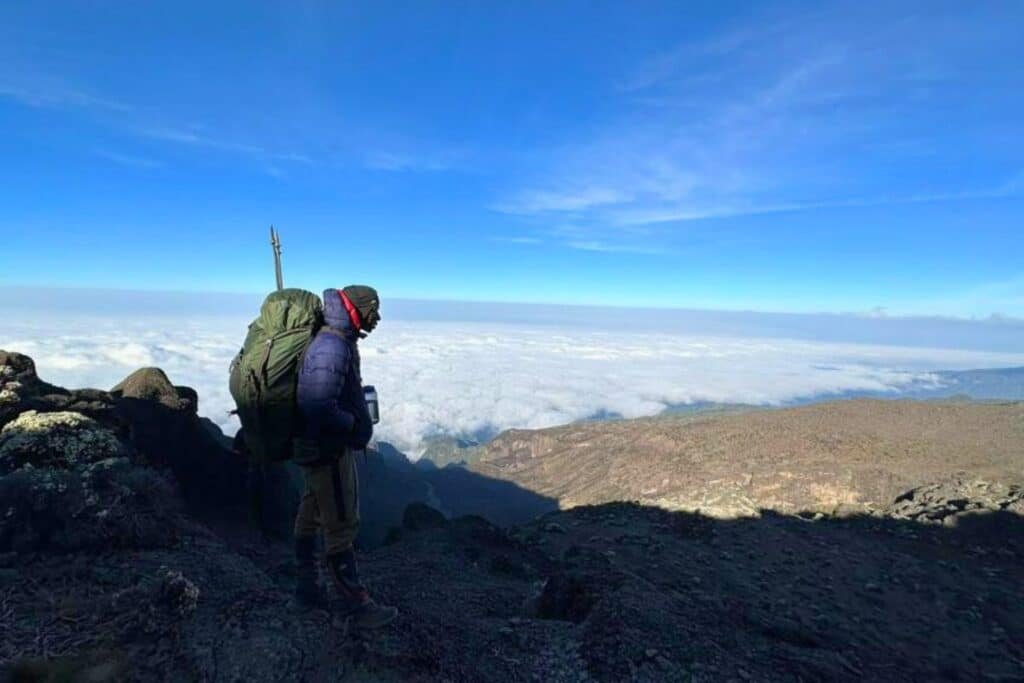
Guides & Altitude Safety: How Expert Leadership Ensures a Safe Kilimanjaro Climb
Climbing Mount Kilimanjaro is an incredible achievement, but altitude sickness is a serious risk. This is where experienced Kilimanjaro guides play a critical role—their expertise, health monitoring, and decision-making can mean the difference between a safe, successful summit and a potentially dangerous situation.
The Role of Kilimanjaro Guides in Altitude Safety
✔️ Recognizing Early Symptoms of AMS – Guides are trained to identify altitude sickness before it worsens.
✔️ Daily Health Checks – Using pulse oximeters and the Lake Louise Altitude Sickness Scorecard to monitor oxygen saturation.
✔️ Enforcing the “Pole Pole” Philosophy – Encouraging climbers to move slowly and conserve energy.
✔️ Hydration & Nutrition Reminders – Ensuring trekkers drink enough water and eat regularly for proper acclimatization.
✔️ Managing Acclimatization Hikes – Implementing rest days and “climb high, sleep low” strategies.
✔️ Making Crucial Safety Decisions – If a climber’s condition worsens, guides decide if immediate descent is necessary.
Listen to your guide—their experience could save your life!
🛑 Emergency Protocols: What Happens if Altitude Sickness Becomes Severe?
In extreme cases of HAPE or HACE, guides initiate emergency evacuations:
▪️Immediate descent – The best and fastest way to reverse severe altitude sickness.
▪️Oxygen administration – Used for climbers in distress.
▪️Rapid response coordination – Guides arrange evacuation via stretcher or helicopter if required.
Never ignore AMS symptoms—early intervention prevents dangerous situations.
Kilimanjaro Altitude Safety: Overview
Climbing Mount Kilimanjaro comes with altitude-related challenges, but proper planning and expert guidance can significantly improve your chances of success.
Altitude Safety Checklist
✔️ Choose longer routes (7+ days) for better acclimatization.
✔️ Follow the “Climb High, Sleep Low” principle.
✔️ Stay hydrated — aim for 3-4 liters of water daily.
✔️ Hike at a steady pace — no rushing!
✔️ Be aware of altitude sickness symptoms and report them to your guide.
✔️ Consider taking Acetazolamide (Diamox) for prevention.
✔️ Respect the mountain — be prepared to descend if necessary.
Altitude sickness doesn’t care about fitness level; even experienced climbers can be affected!
Final Thoughts: Prioritizing Safety for a Successful Summit
Reaching Uhuru Peak is an incredible achievement, but safety should always come first. By choosing the right route, listening to your guides, and following acclimatization best practices, you’ll greatly increase your chances of a safe and successful Kilimanjaro summit.
At GO2KILI, we prioritize your health and safety above all else—ensuring you climb smart, acclimate properly, and have the adventure of a lifetime.


